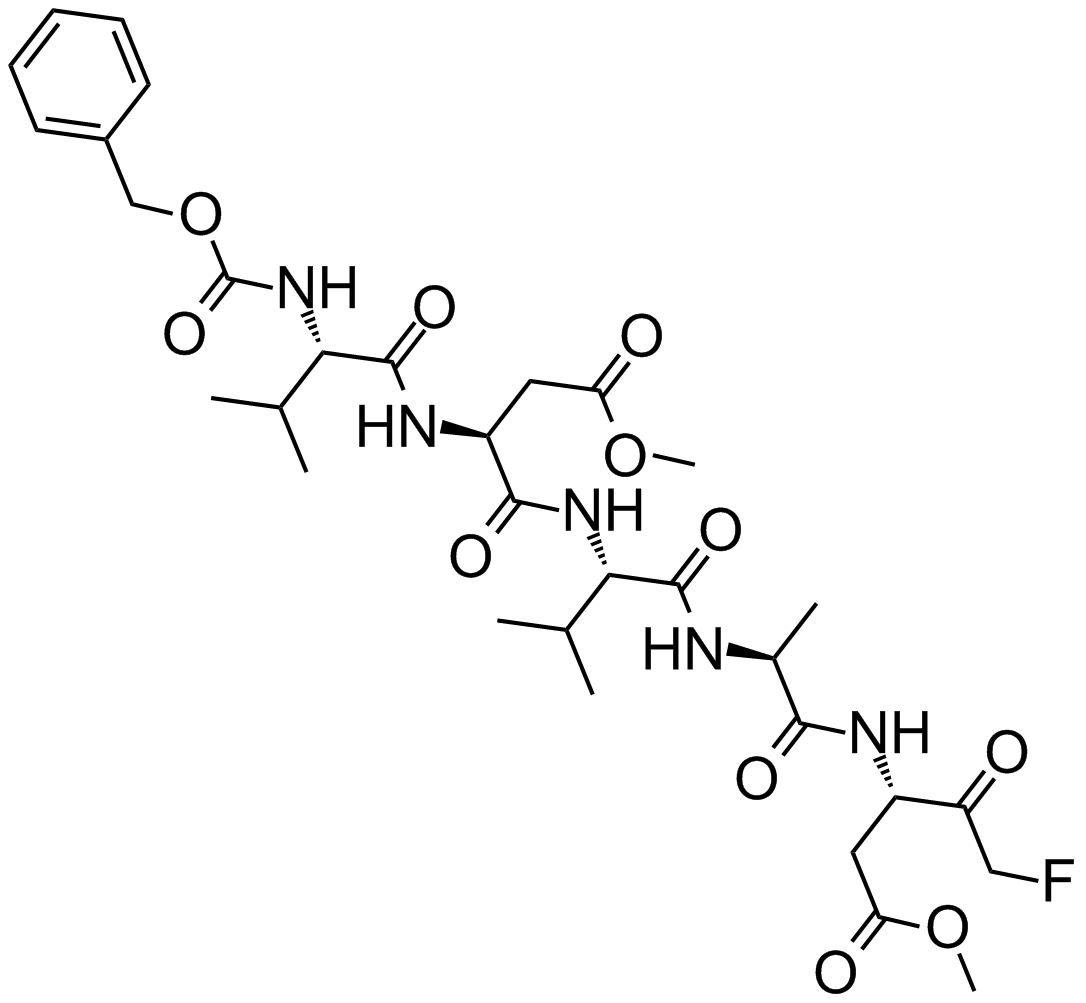Apoptosis
Apoptosis, also known as programed cell death, is a tightly controlled cellular process which is characterized by membrane blebbing, cell shrinkage, chromatin condensation, and DNA fragmentation.
Products for Apoptosis
- IAP(8)
- Apoptosis Inducers(30)
- p53(25)
- Caspase(21)
- PC-PLC(4)
- Bcl-2 Family(22)
- PKD(2)
- TNF-α(9)
- MDM2(9)
- Other Apoptosis(9)
- Bcl-xL(1)
- KEAP1-Nrf2(5)
- Thymidylate Synthase(4)
- 14.3.3 Proteins(1)
- Survivin(1)
- Cat.No. Product Name Information
-
BCC3593
HA14-1
HA14-1 is a Bcl-2/Bcl-XL antagonist. HA14-1 binds the designated pocket on Bcl-2 with the IC50 of ≈9 μM in competing with the Bcl-2 binding of Flu-BakBH3, and inhibits its function.
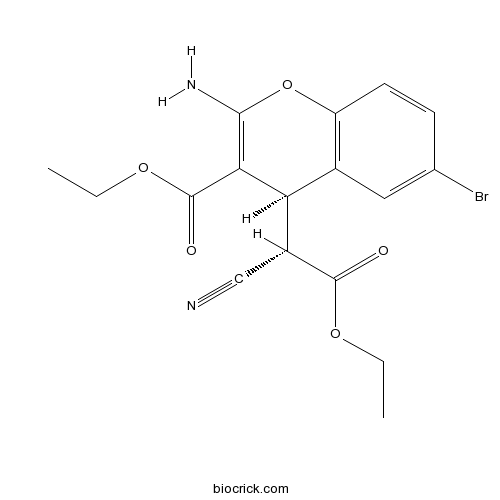
-
BCC3653
Cycloheximide
Cycloheximide (Naramycin A), an antifungal antibiotic, is an eukaryote protein synthesis inhibitor, with IC50s of 532.5 nM and 2880 nM for protein synthesis and RNA synthesis in vivo, respectively. Cycloheximide suppresses ferroptosis and inhibits autophagy.
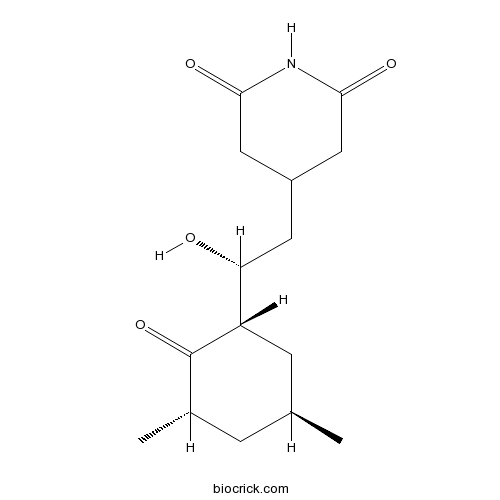
-
BCC5585
(+)-Apogossypol
(+)-Apogossypol is a pan-BCL-2 antagonist. (+)-Apogossypol binds to Mcl-1, Bcl-2 and Bcl-xL with EC50s of 2.6, 2.8 and 3.69 µM, respectively.
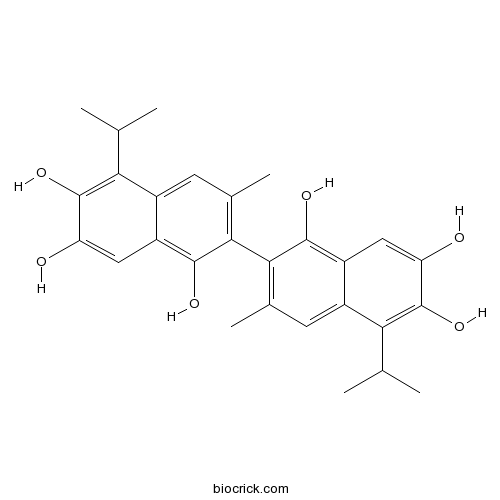
-
BCC1156
Nutlin-3b
Nutlin-3b is a p53/MDM2 inhibitor with an IC50 of 13.6 μM. Nutlin-3b is 150 times less potent in binding to MDM2 than Nutlin-3a.
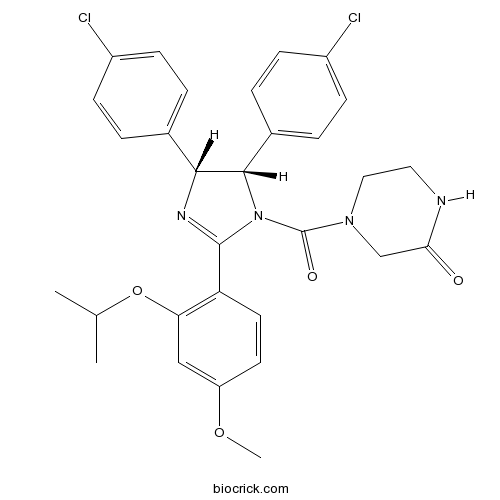
-
BCC1812
Nutlin-3a chiral
Nutlin-3a, an active enantiomer of Nutlin-3, is a potent murine double minute (MDM2) inhibitor (IC50=90 nM). Nutlin-3a inhibits MDM2-p53 interactions and stabilizes the p53 protein, and induces cell autophagy and apoptosis. Nutlin-3a has the potential for the study of TP53 wild-type ovarian carcinomas.
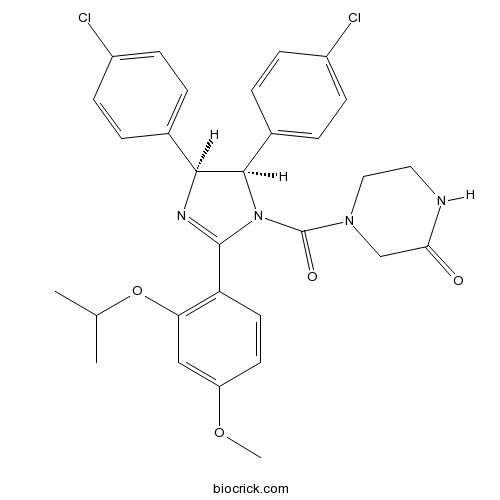
-
BCC2255
NSC 66811
MDM2 inhibitor. Disrupts MDM2-p53 interaction
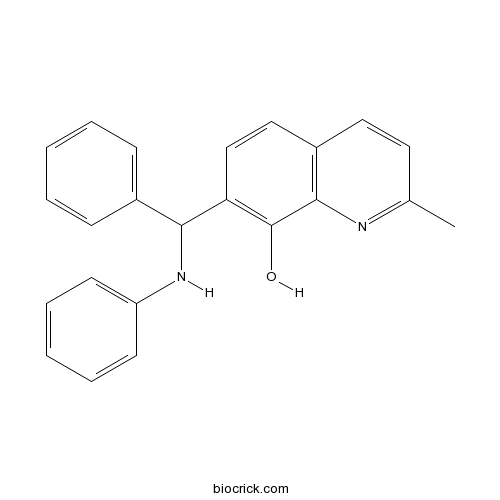
-
BCC3873
Triflurdine (Viroptic)
Trifluridine (Trifluorothymidine; 5-Trifluorothymidine; TFT) is an irreversible thymidylate synthase inhibitor, and thereby suppresses DNA synthesis. Trifluridine is an antiviral drug for herpes simplex virus (HSV) infection.
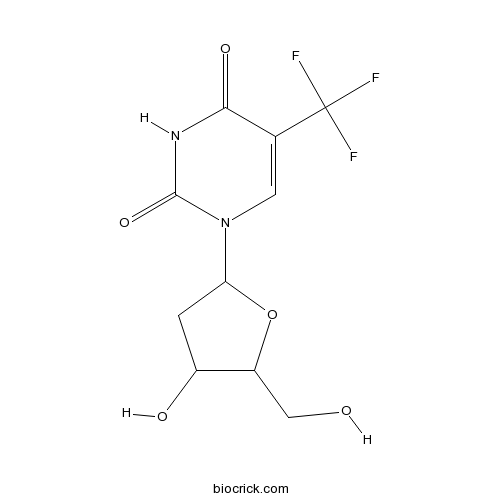
-
BCC5405
Mcl1-IN-1
Mcl1-IN-1 is an inhibitor of myeloid cell factor 1 (Mcl-1) (IC50=2.4 µM).
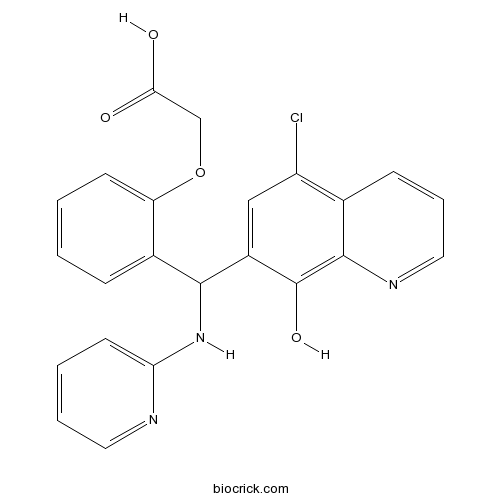
-
BCC2242
NSC 319726
NSC319726 (ZMC1) is a mutant p53R175 reactivator; inhibits growth of fibroblasts expressing the p53R175 mutation (IC50 = 8 nM); shows no inhibition for p53 wild-type cells.
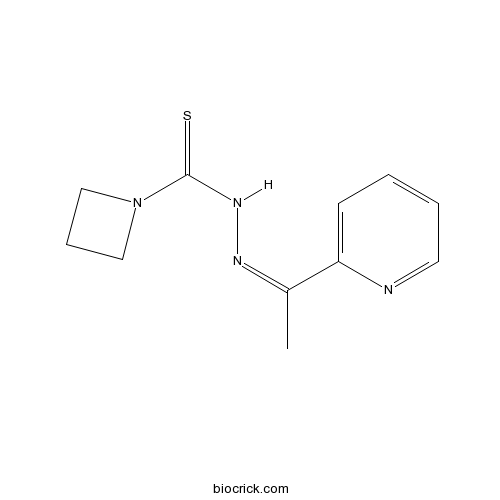
-
BCC2409
MIRA-1
Restores mutant p53 activity; proapoptotic
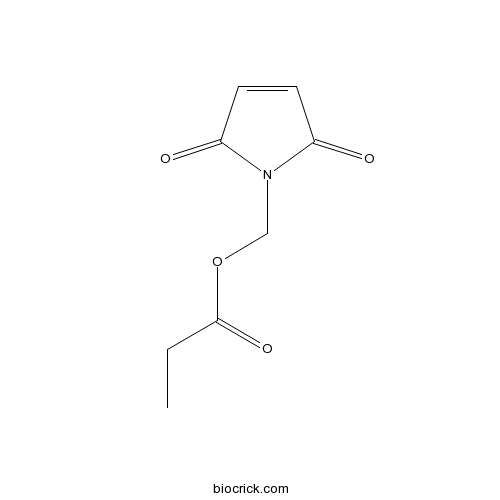
-
BCC1438
Brassinolide
Brassinolide is a predominant plant growth modulator that regulate plant cell elongation.
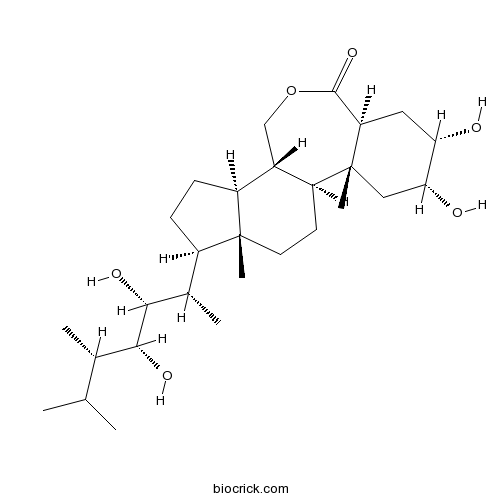
-
BCC2357
Ivachtin
Ivachtin (Caspase-3 Inhibitor VII; compound 7a) is a nonpeptide, noncompetitive and reversibl caspase-3 inhibitor with an IC50 of 23 nM. Ivachtin has modest selectivity for the remaining caspases.
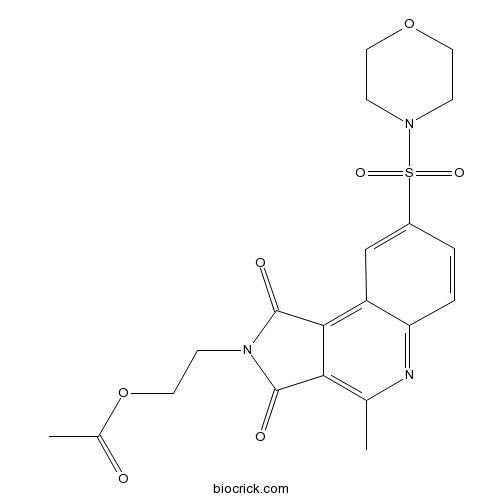
-
BCC2390
Oncrasin 1
Oncrasin-1 is a potent and effective anticancer inhibitor that kills various human lung cancer cells with K-Ras mutations at low or submicromolar concentrations; also led to abnormal aggregation of PKCι in nucleus of sensitive cells but not in resistant cells.
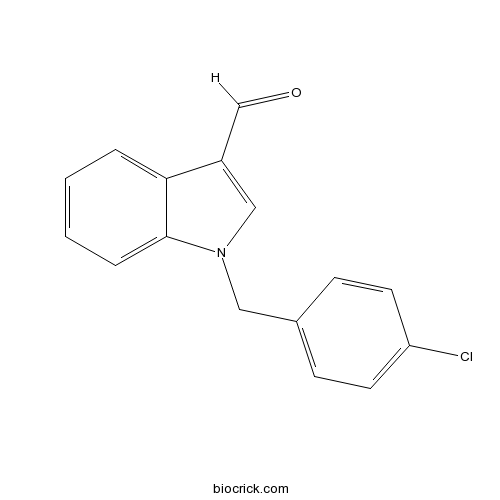
-
BCC2399
Cesium chloride
Potassium channel blocker; neuroprotective

-
BCC2251
YM155
YM-155 (Sepantronium bromide) is a survivin inhibitor with an IC50 of 0.54 nM.
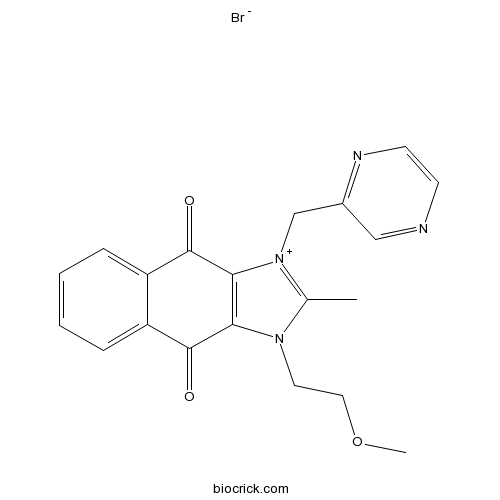
-
BCC5479
Epibrassinolide
Epibrassinolide (24-Epibrassinolide) is a ubiquitously occurring plant growth hormone which shows great potential to alleviate heavy metals and pesticide stress in plants. Epibrassinolide is a potential apoptotic inducer in various cancer cells without affecting the non-tumor cell growth.
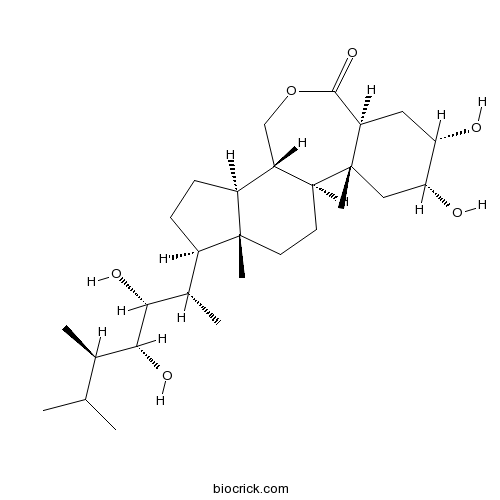
-
BCC2099
Apoptosis Activator 2
MDK83190 is a potent apoptosis activator, induces Apaf-1 oligomerization, increases procaspase-9 processing and subsequent caspase-3 activation in a cyto c-dependent Manner.
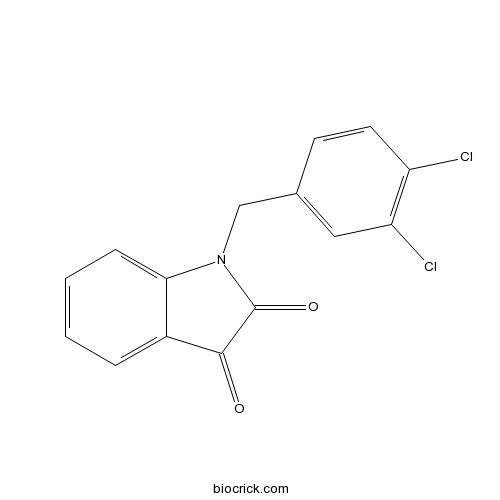
-
BCC6540
NSC59984
NSC59984 induces mutant p53 protein degradation via MDM2 and the ubiquitin-proteasome pathway. NSC59984 acts by targeting GOF-mutant p53 and stimulates p73 to restore the p53 pathway signaling.
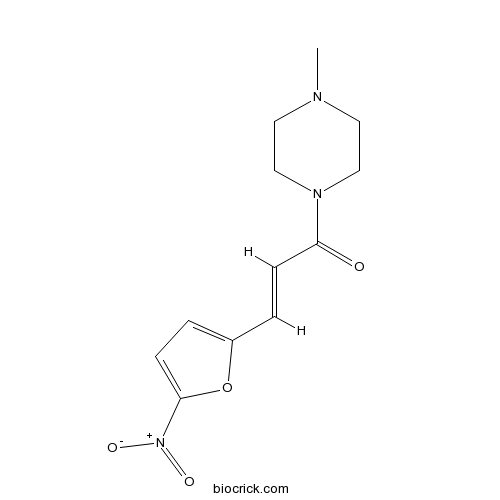
-
BCC2234
Obatoclax mesylate (GX15-070)
Obatoclax Mesylate (GX15-070 Mesylate), a BH3 mimetic, is a pan-BCL-2 family proteins inhibitor with a Ki of 220 nM for BCL-2. Obatoclax Mesylate induces autophagy-dependent cell death and targets cyclin D1 for proteasomal degradation. Obatoclax Mesylate has anti-cancer and broad-spectrum antiparasitic activity.
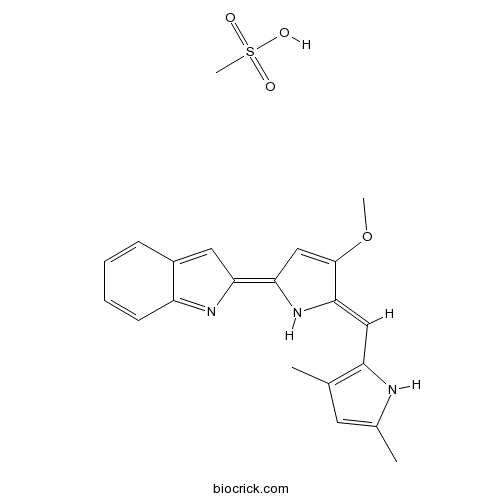
-
BCC1509
D609
D609 is a selective competitive inhibitor of phosphatidyl choline-specific phospholipase C (PC-PLC), with Ki of 6.4 μM.
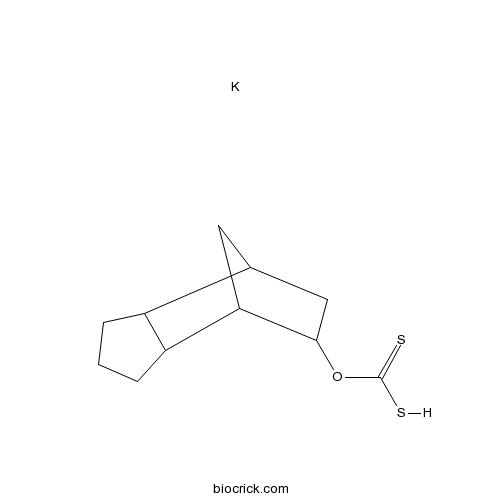
-
BCC8083
RHC 80267
RHC 80267 (U-57908) is a potent and selective inhibitor of diacylglycerol lipase (DAGL) (with IC50 of 4 μM in canine platelets). RHC-80267 inhibits cholinesterase activity with an IC50 of 4 μM, thereby enhancing the relaxation evoked by acetylcholine. RHC 80267 also inhibits COX and the hydrolysis of phosphatidylcholine (PC).
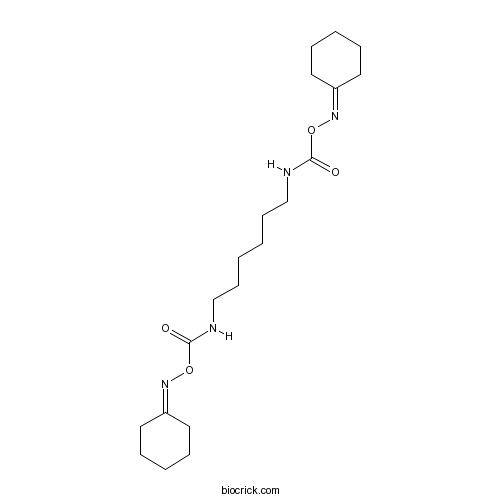
-
BCC5355
Roquinimex
Roquinimex (Linomide; PNU212616; ABR212616) is a quinoline derivative immunostimulant which increases NK cell activity and macrophage cytotoxicity; inhibits angiogenesis and reduces the secretion of TNF alpha.
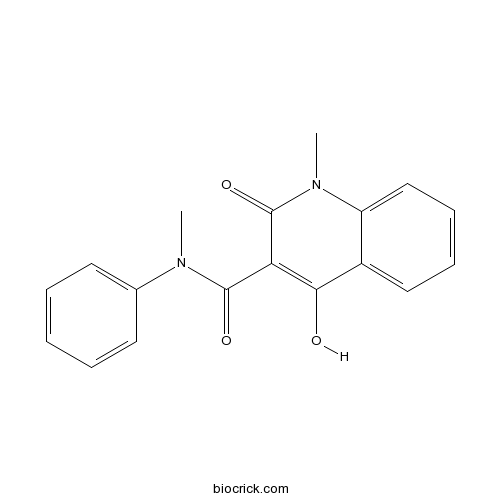
-
BCC4198
Lenalidomide hemihydrate
Lenalidomide hemihydrate (CC-5013 hemihydrate) is a derivative of Thalidomide and an orally active immunomodulator. Lenalidomide hemihydrate (CC-5013 hemihydrate) is a ligand of ubiquitin E3 ligase cereblon (CRBN), and it causes selective ubiquitination and degradation of two lymphoid transcription factors, IKZF1 and IKZF3, by the CRBN-CRL4 ubiquitin ligase. Lenalidomide hemihydrate (CC-5013 hemihydrate) specifically inhibits growth of mature B-cell lymphomas, including multiple myeloma, and induces IL-2 release from T cells.
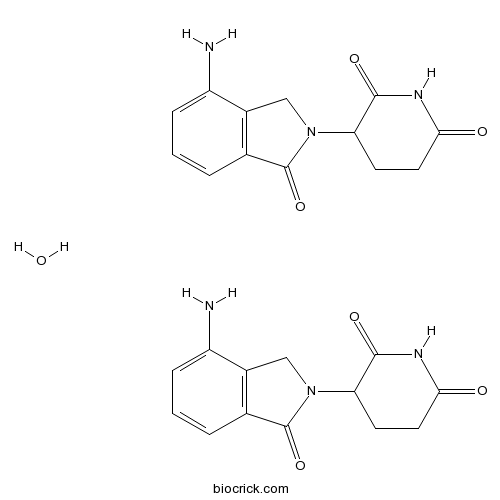
-
BCC2077
Necrostatin 2 racemate
Necrostatin 2 racemate (Nec-1S), the Nec-1 stable, is a potent and specific RIPK1 inhibitor lacking the IDO-targeting effect.
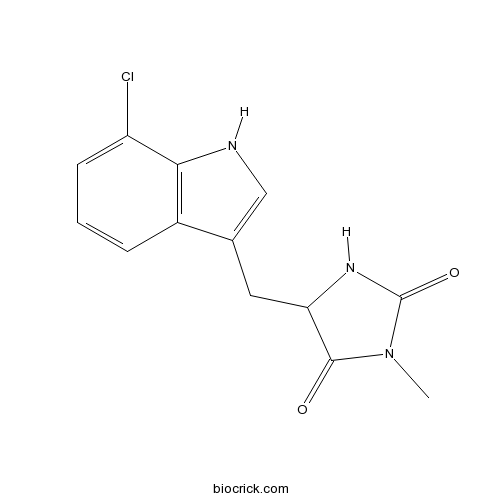
-
BCC1793
Necrostatin 2
Necrostatin 2 is a potent necroptosis inhibitor.
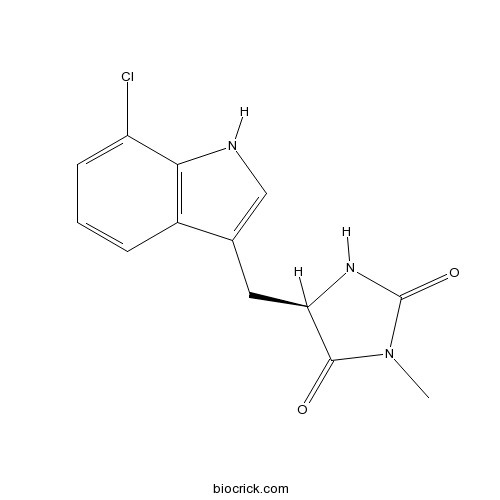
-
BCC2078
Necrostatin 2 S enantiomer
Necrostatin 2 S enantiomer is the S enantiomer of Necrostatin 2.
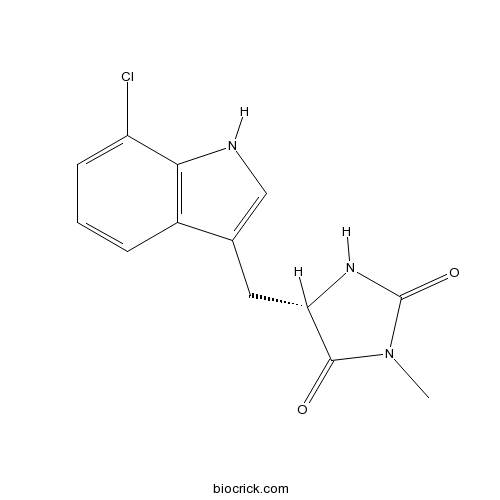
-
BCC3613
ABT-737
ABT-737 is a selective and BH3 mimetic Bcl-2, Bcl-xL and Bcl-w inhibitor with EC50s of 30.3 nM, 78.7 nM, and 197.8 nM, respectively.
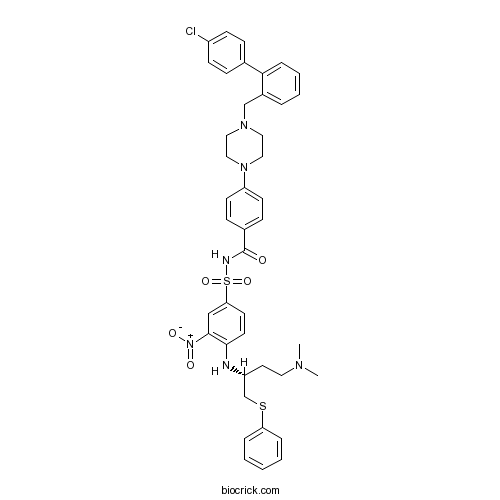
-
BCC2405
TLQP 21

-
BCC5457
Raltegravir potassium salt
Raltegravir (potassium salt) is a potent integrase (IN) inhibitor, used to treat HIV infection.
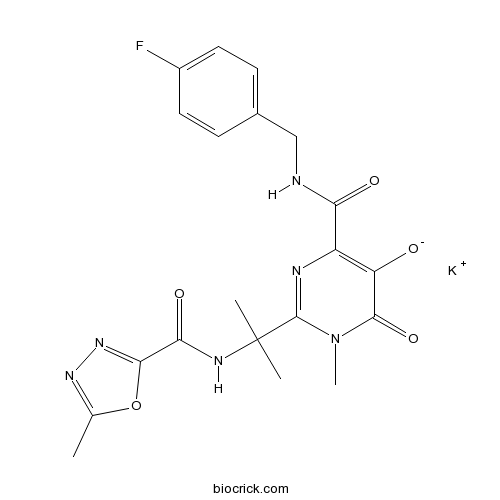
-
BCC2252
GDC-0152
GDC-0152 is a potent IAPs inhibitor, and binds to the BIR3 domains of XIAP, cIAP1, cIAP2 and the BIR domain of ML-IAP with Ki values of 28 nM, 17 nM, 43 nM and 14 nM, respectively.
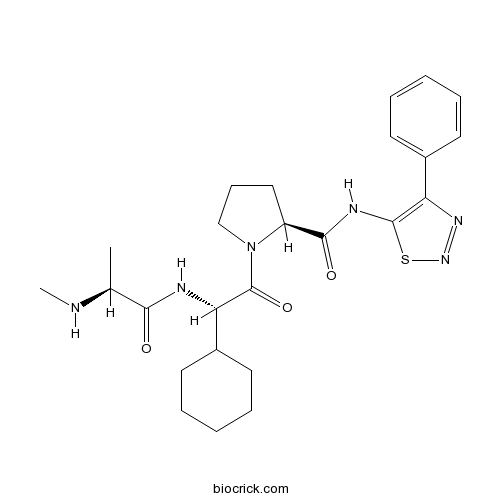
-
BCC2257
TW-37
TW-37 is a potent Bcl-2 inhibitor with Ki values of 260, 290 and 1110 nM for Mcl-1, Bcl-2 and Bcl-xL, respectively.
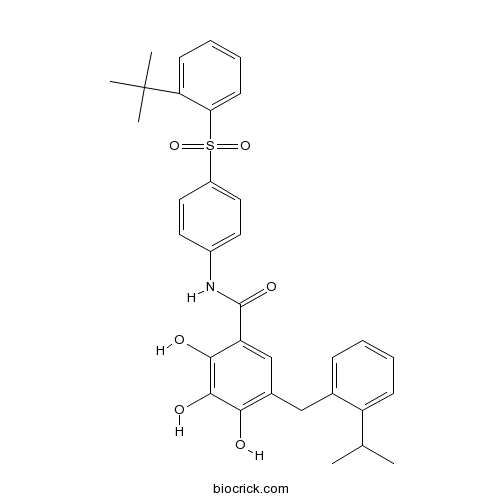
-
BCC2411
PhiKan 083
PhiKan 083 is a carbazole derivative, which binds to the surface cavity and stabilizes Y220C (a p53 mutant), with a Kd of 167 μM, and a relative binding affinity (Kd) of 150 μM in Ln229 cells.
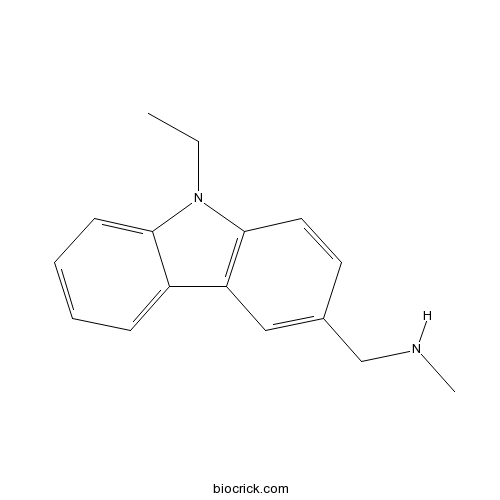
-
BCC2240
JNJ-26854165 (Serdemetan)
Serdemetan(JNJ-26854165) acts as a HDM2 ubiquitin ligase antagonist and also induces early apoptosis in p53 wild-type cells, inhibits cellular proliferation followed by delayed apoptosis in the absence of functional p53.
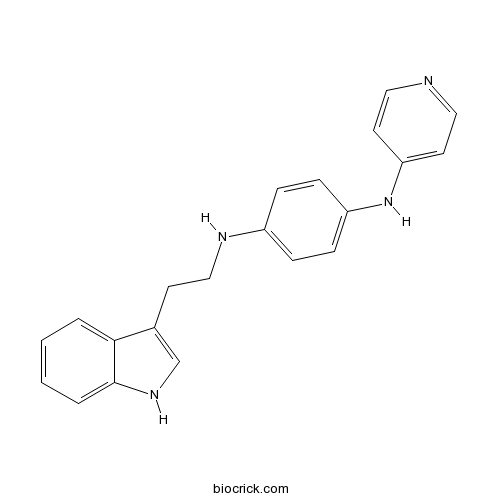
-
BCC1879
R1530
R1530 is the multikinase inhibitor with potential antiangiogenesis and antineoplastic activities.
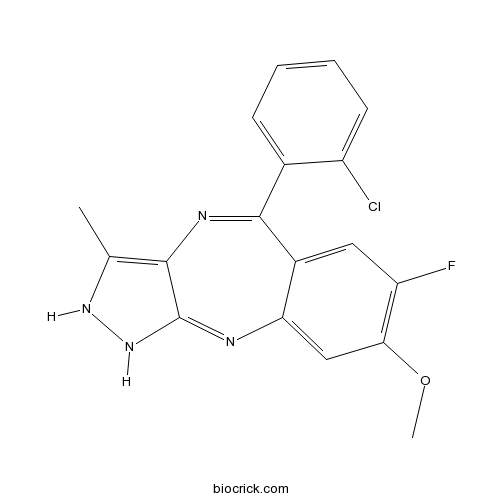
-
BCC2237
Apogossypolone (ApoG2)
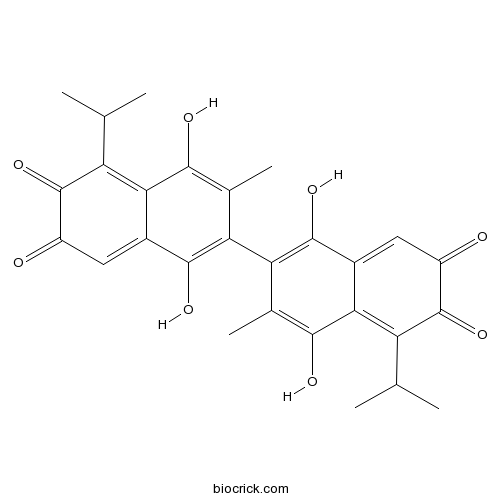
-
BCC2254
Nutlin-3
Nutlin-3 is a potent and selective Mdm2 (RING finger-dependent ubiquitin protein ligase for itself and p53) antagonist with IC50 of 90 nM in a cell-free assay; stabilizes p73 in p53-deficient cells.
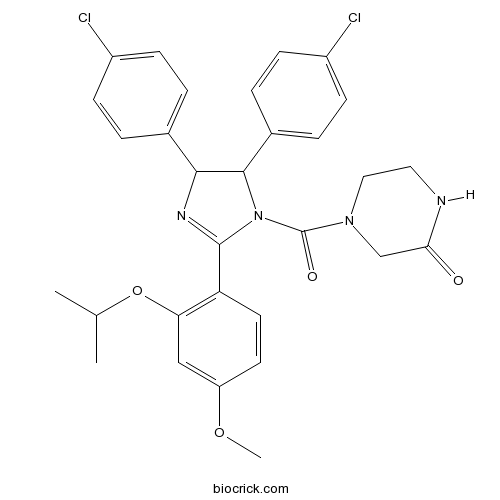
-
BCC1375
Gossypolone
Downregulates Bcl-2 and Mcl-1; pro-apoptotic
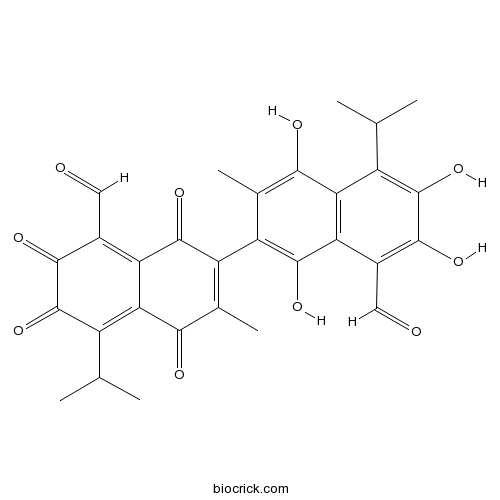
-
BCC1272
ABT-263 (Navitoclax)
Navitoclax (ABT-263) is a potent and orally active Bcl-2 family protein inhibitor that binds to multiple anti-apoptotic Bcl-2 family proteins, such as Bcl-xL, Bcl-2 and Bcl-w, with a Ki of less than 1 nM.
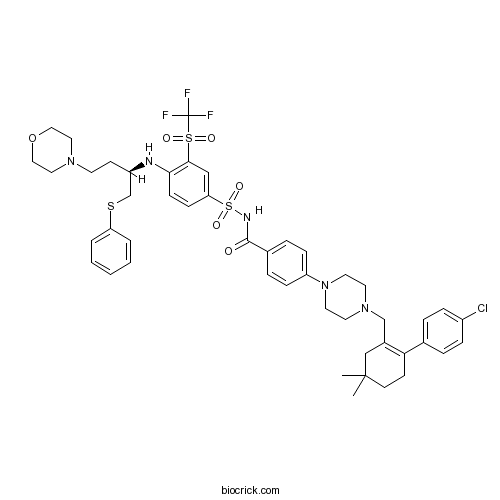
-
BCC6398
Radotinib(IY-5511)
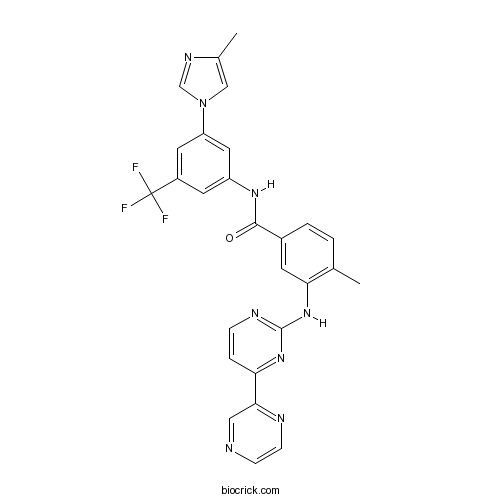
-
BCC5282
CDDO-EA
CDDO-EA is an NF-E2 related factor 2/antioxidant response element (Nrf2/ARE) activator.
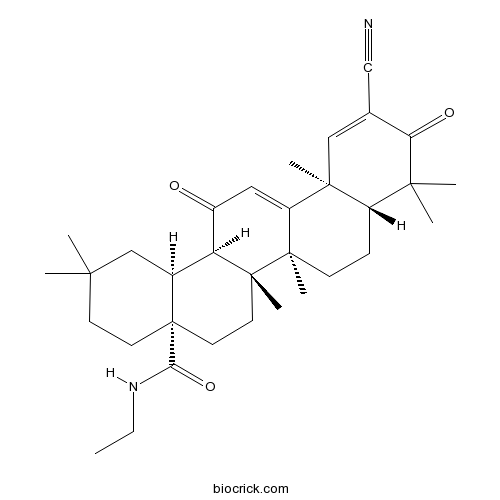
-
BCC1830
p53 and MDM2 proteins-interaction-inhibitor chiral
p53 and MDM2 proteins-interaction-inhibitor (chiral) (Compound 32) is an inhibitor of the interaction between p53 and MDM2 proteins.
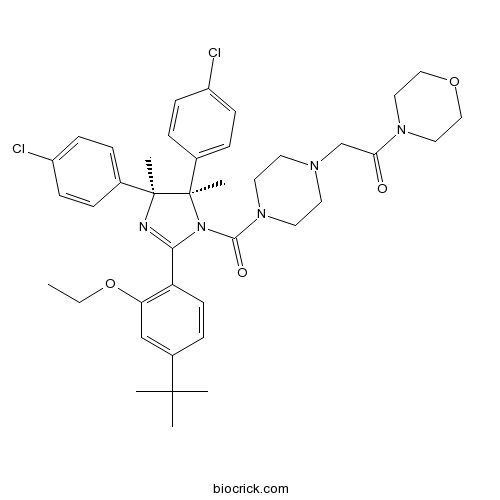
-
BCC1894
RG7112
RG7112 is a potent, selective, first clinical, orally active and blood-brain barrier crossed MDM2-p53 inhibitor, with an IC50 of 18 nM and a KD of 11 nM for binding to MDM2.
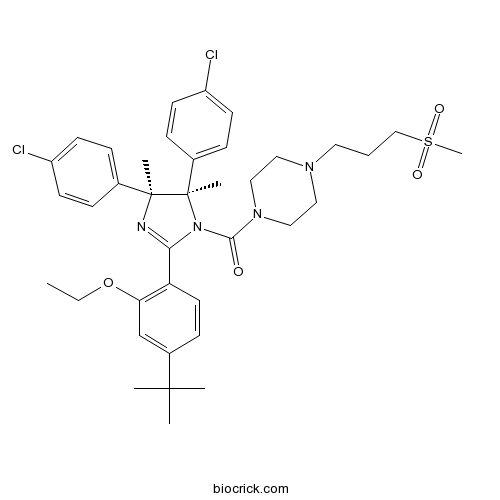
-
BCC1831
p53 and MDM2 proteins-interaction-inhibitor racemic
p53 and MDM2 proteins-interaction-inhibitor (racemic) (Compound 2j) is an inhibitor of the interaction between p53 and MDM2 proteins.
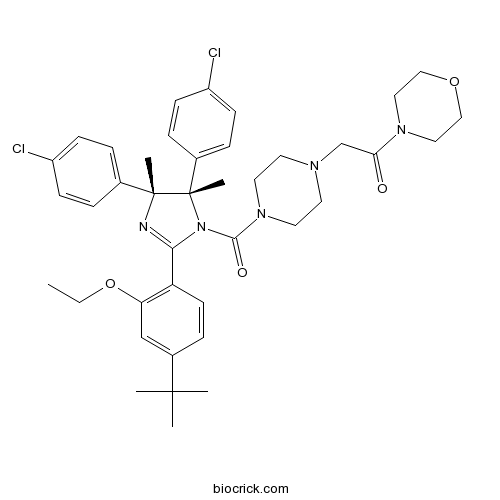
-
BCC4002
SM-164
SM-164 is a cell-permeable Smac mimetic compound. SM-164 binds to XIAP protein containing both the BIR2 and BIR3 domains with an IC50 value of 1.39 nM and functions as an extremely potent antagonist of XIAP.
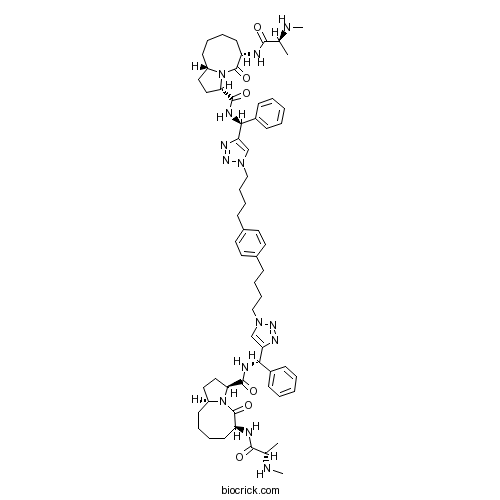
-
BCC5132
Meisoindigo
Meisoindigo(Natura-α; N-Methylisoindigotin; Dian III), a derivative of Indigo naturalis, might induce apoptosis and myeloid differentiation of acute myeloid leukemia (AML).
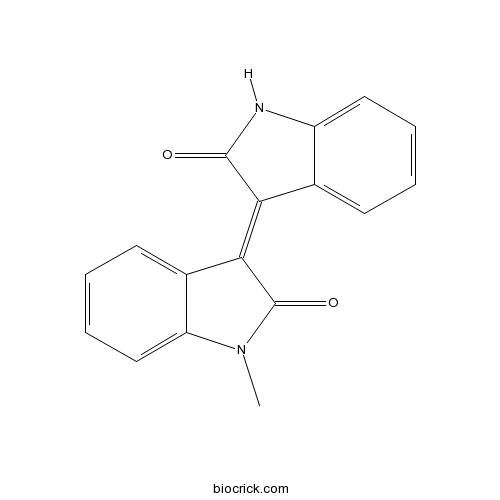
-
BCC1138
Z-VDVAD-FMK
